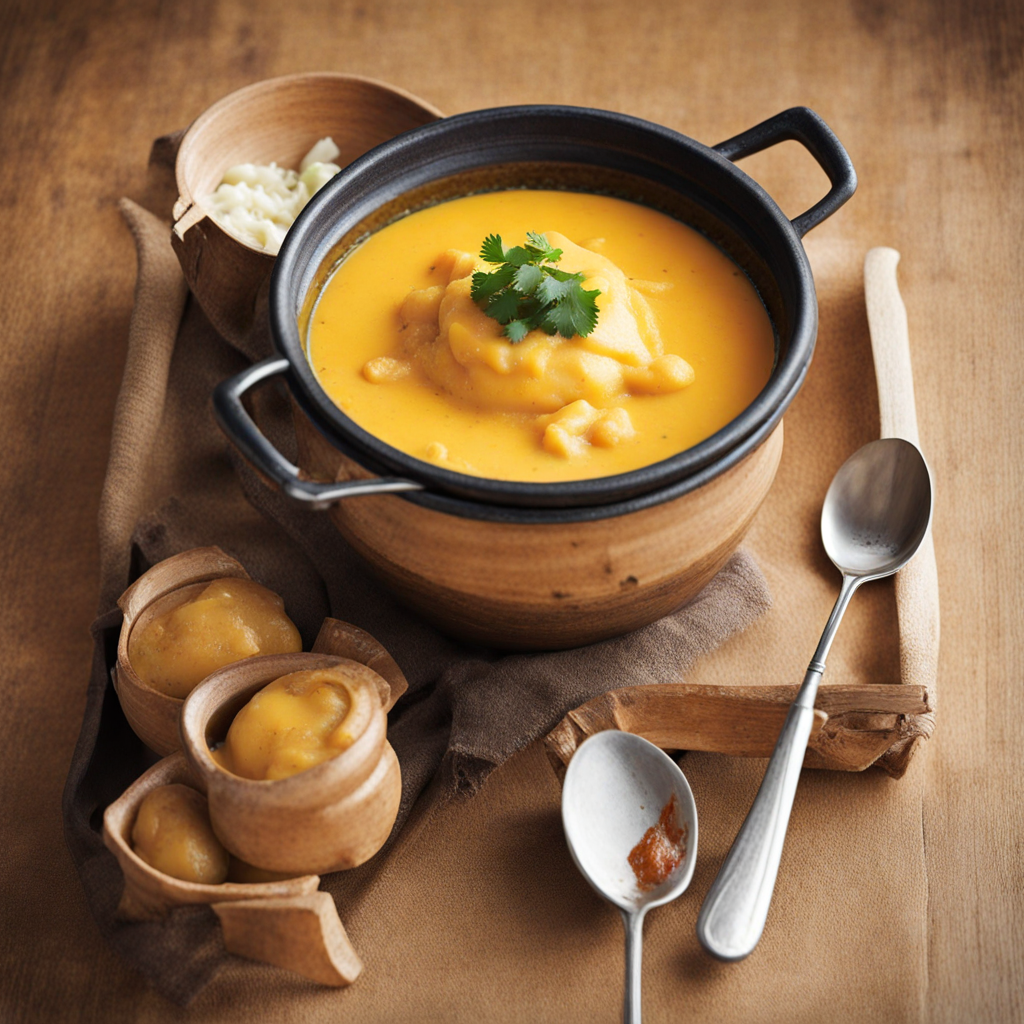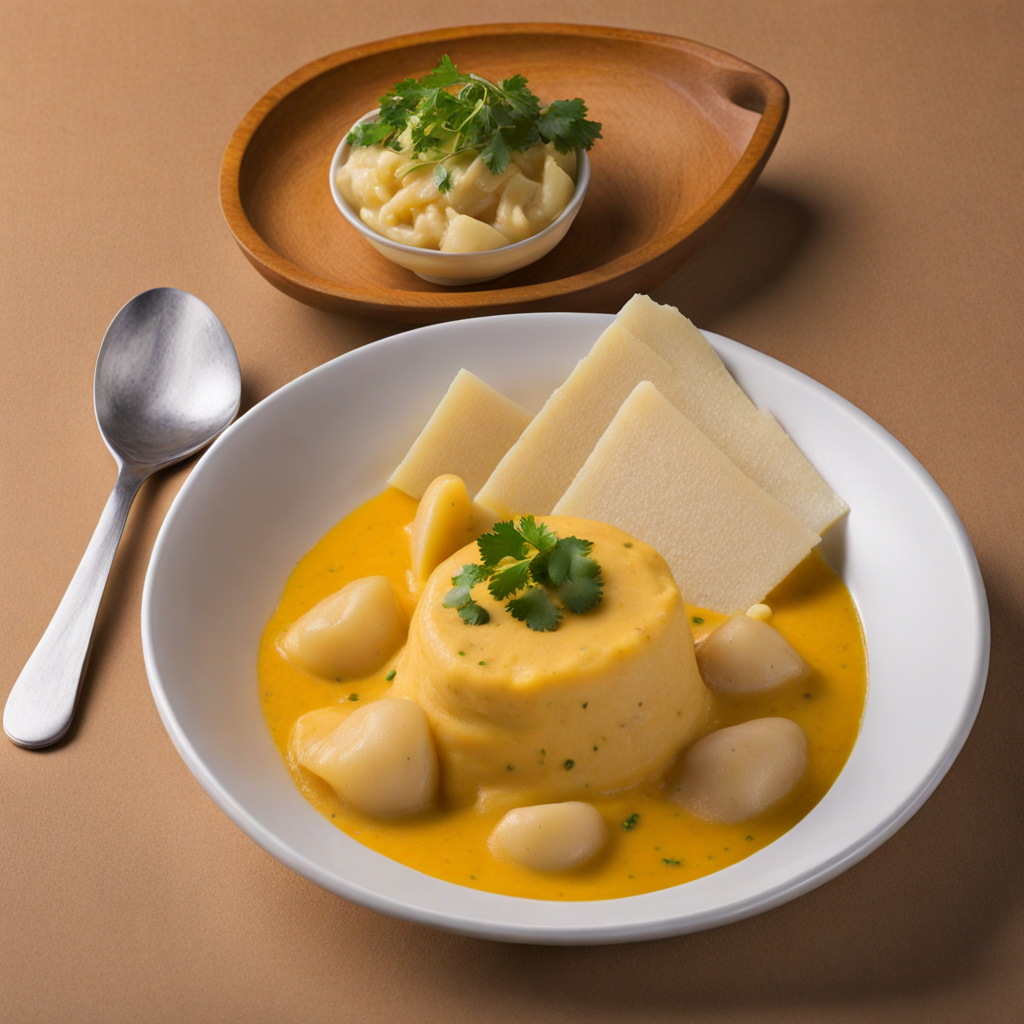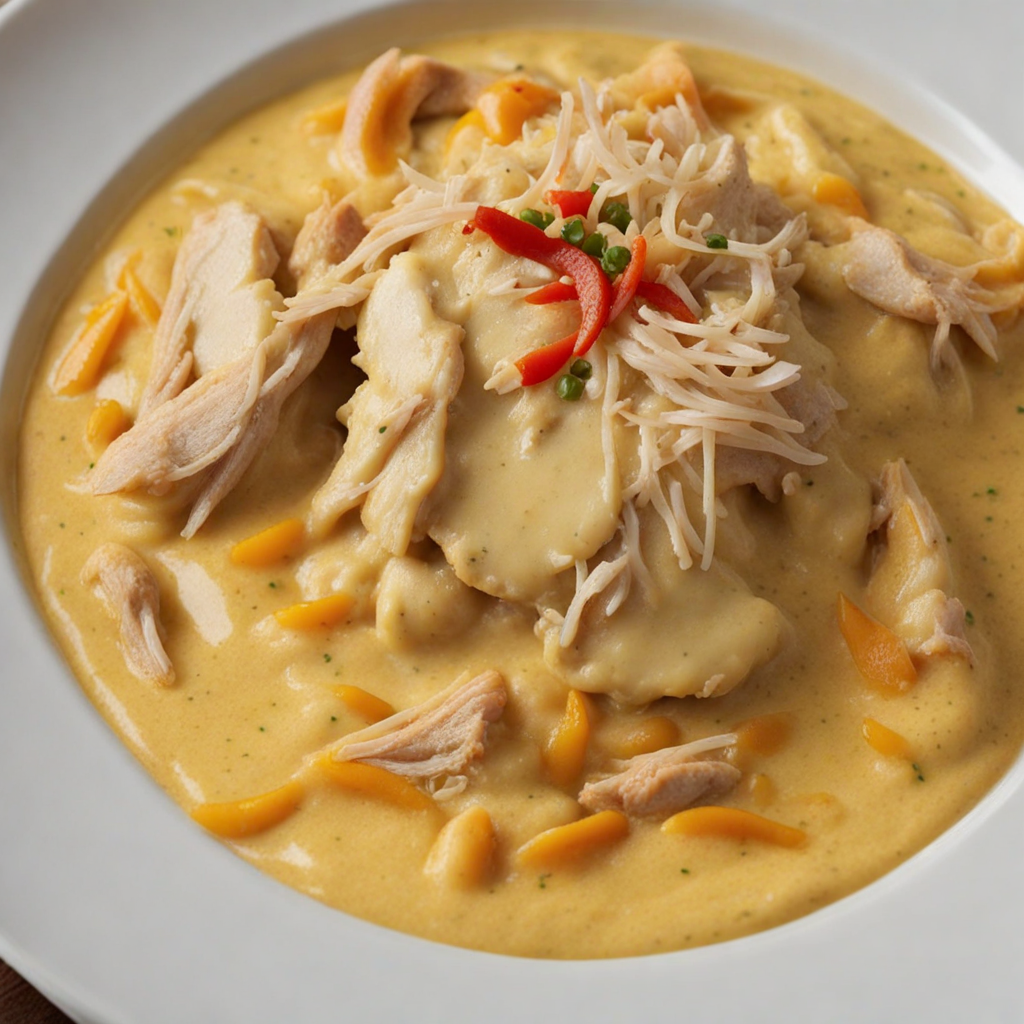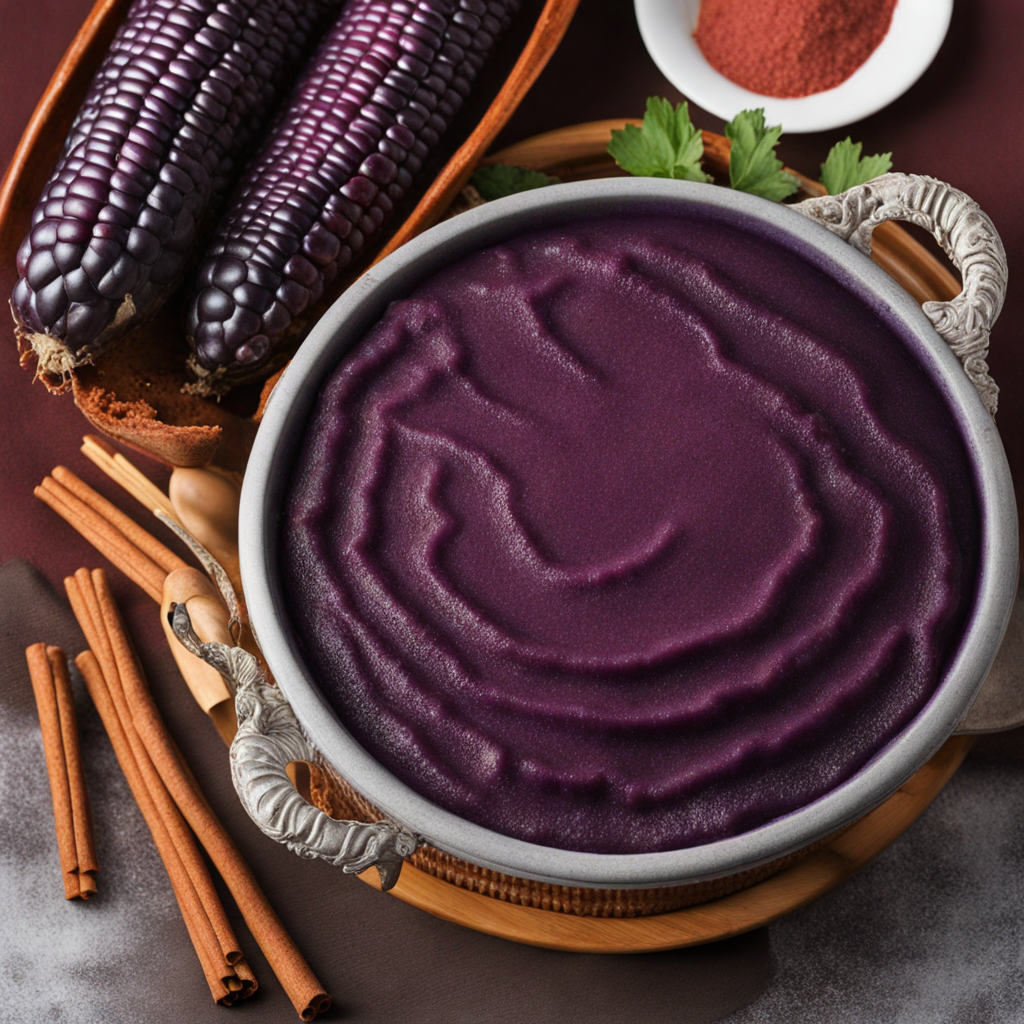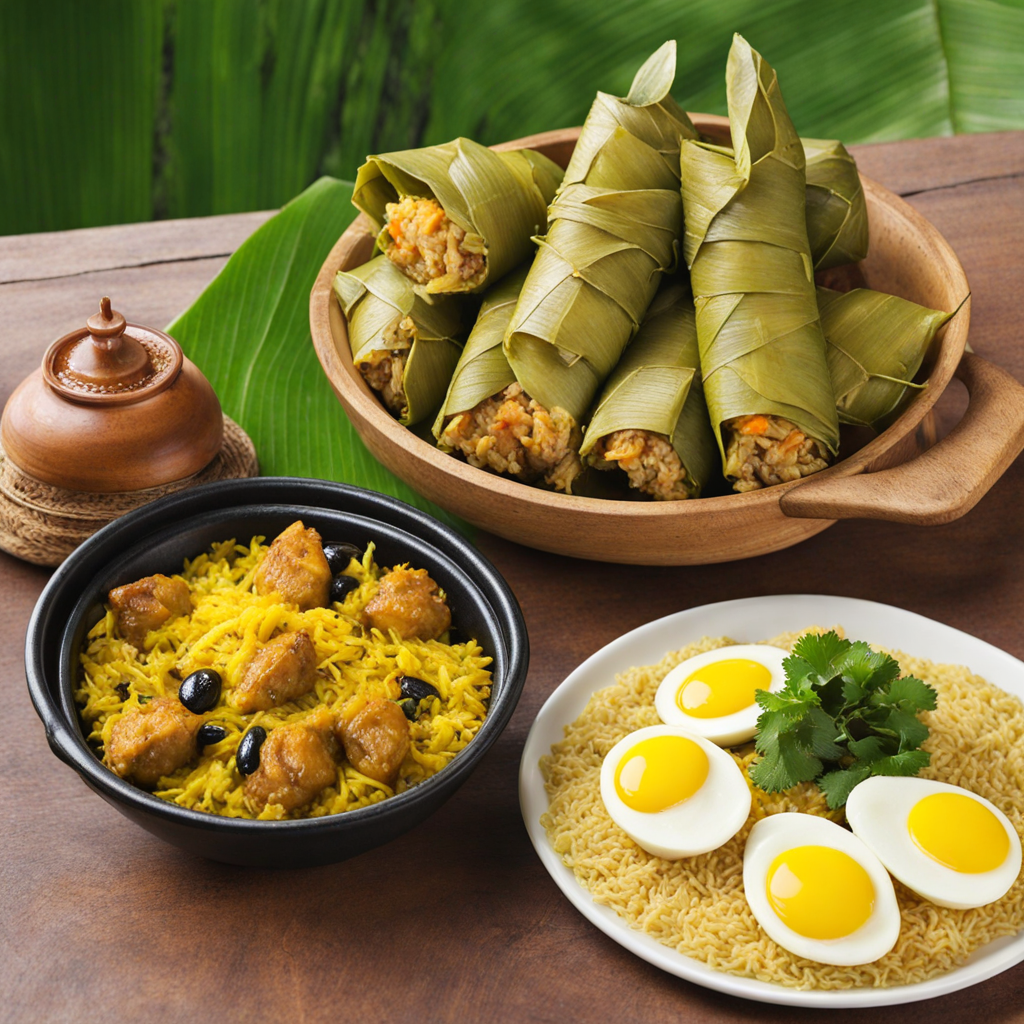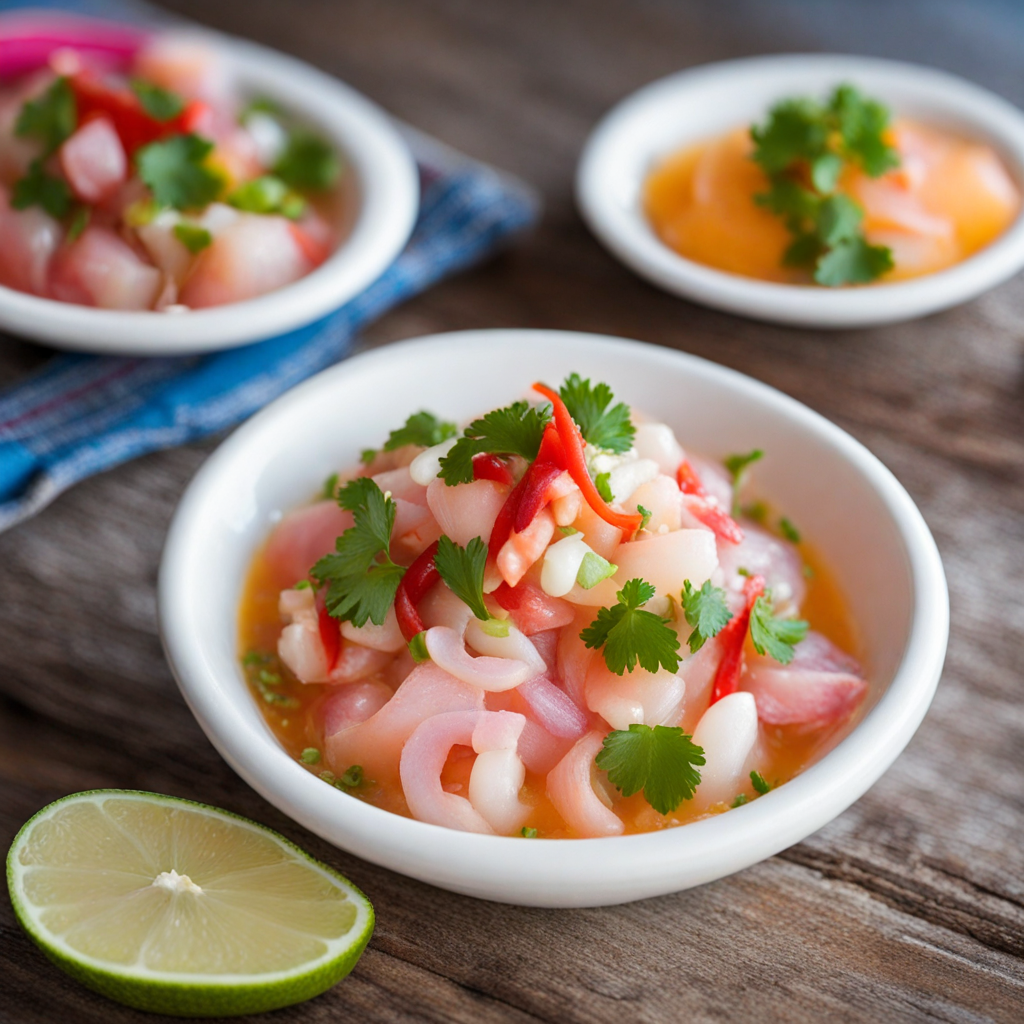Papa a la Huancaina
Papa a la Huancaina is a vibrant and flavorful dish from Peru that showcases the country's rich culinary heritage. At its core, it features boiled yellow potatoes, which are known for their creamy texture and natural sweetness. The potatoes are often served chilled or at room temperature, making them a refreshing addition to any meal. The star of the dish, however, is the Huancaina sauce, a luscious blend of queso fresco (fresh cheese), aji amarillo (yellow chili pepper), garlic, and milk, which creates a creamy, slightly spicy, and tangy dressing that perfectly complements the potatoes. The striking yellow color of the sauce not only adds visual appeal but also hints at the bold flavors that await the palate.
How It Became This Dish
The History of Papa a la Huancaína: A Culinary Treasure from Peru Introduction In the heart of Peru, a vibrant dish known as Papa a la Huancaína has captivated the palates of locals and visitors alike. This dish, which consists of boiled potatoes smothered in a creamy, spicy cheese sauce, is more than just a delightful culinary experience; it encapsulates the rich history, culture, and traditions of the Andean region. To understand Papa a la Huancaína is to delve into the tapestry of Peruvian gastronomy and the influences that have shaped it over centuries. Origins The origins of Papa a la Huancaína are deeply rooted in the Andean region of Peru, particularly in the province of Huancayo. The dish is believed to have emerged in the 19th century, during a time when the culinary landscape of Peru was evolving. The region's indigenous communities had long relied on potatoes as a staple food, with over 4,000 varieties cultivated in the Andes. Potatoes were not just sustenance; they were a vital part of their cultural identity, and their significance is reflected in various Andean traditions. The name "Papa a la Huancaína" translates to "Potatoes in the Huancayo style." It is said that the dish was created by the women of Huancayo, who would prepare it for travelers and workers heading to the capital, Lima. The simplicity of the dish belies its flavor; it combines the earthy taste of potatoes with a sauce that features the local Aji Amarillo pepper, queso fresco, garlic, and sometimes nuts like pecans or walnuts. This combination reflects the fusion of indigenous ingredients with Spanish influences, a hallmark of Peruvian cuisine. Cultural Significance Papa a la Huancaína holds considerable cultural significance in Peru. It is often served as a popular appetizer at celebrations, family gatherings, and festivals, making it a symbol of hospitality and community. The dish is not only a testament to the culinary heritage of the Andes but also embodies the blending of indigenous and Spanish cultures. The use of Aji Amarillo, a key ingredient, highlights the importance of local Peruvian produce in the national diet, while the creamy cheese sauce can be seen as a nod to the influence of European culinary practices. Moreover, the dish’s popularity has transcended class and region, making it a beloved staple in households across the country. Its versatility allows it to be paired with various accompaniments, such as hard-boiled eggs, olives, or even a side of rice, thereby adapting to diverse culinary preferences. This adaptability has made Papa a la Huancaína not just a dish but a national icon, enjoyed by people from all walks of life. Development Over Time As Peru entered the 20th century, the culinary scene began to evolve rapidly. The country's diverse ethnic makeup, which includes influences from Africa, Asia, and Europe, contributed to the complex tapestry of flavors that define modern Peruvian cuisine. During this time, Papa a la Huancaína began to gain recognition beyond its regional roots. As Peruvians migrated to urban centers and the global community became more interested in Peruvian food, the dish found its way onto restaurant menus and into the hearts of food enthusiasts. The 1980s and 1990s marked a significant turning point for Peruvian cuisine, with a renewed interest in traditional dishes. Chefs began to experiment with Papa a la Huancaína, incorporating innovative techniques and ingredients while respecting the essence of the original recipe. This culinary renaissance was fueled by the global fusion movement, which encouraged chefs to explore and celebrate their cultural heritage. Notably, the dish has also gained international acclaim, appearing in high-end restaurants and food festivals around the world. Peruvian chefs like Gastón Acurio have played a pivotal role in promoting traditional dishes like Papa a la Huancaína on the global stage, showcasing the depth and variety of Peruvian gastronomy. With its unique flavors and rich history, the dish has become a culinary ambassador for Peru, enticing food lovers and travelers alike. Modern Variations In contemporary cuisine, Papa a la Huancaína has inspired numerous variations, reflecting the ongoing evolution of Peruvian food. While the classic dish remains a favorite, contemporary chefs have begun to infuse it with new life by experimenting with flavors and techniques. Variants may include the use of different types of cheese, the addition of spices, or the incorporation of other vegetables alongside the potatoes. Some chefs even create deconstructed versions, presenting the components in a more avant-garde manner. Additionally, the rise of vegetarian and vegan diets has prompted adaptations of the traditional recipe. Plant-based alternatives, such as cashew cream, are sometimes used to create a vegan version of the sauce, allowing the dish to reach a broader audience without compromising its essential flavors. Conclusion Papa a la Huancaína is a dish that tells a story—a story of the Andes, of cultural fusion, and of community. From its humble beginnings in Huancayo to its status as a national icon, it embodies the spirit of Peru and its rich culinary heritage. As it continues to evolve, the dish remains a beloved staple, not only on the tables of Peruvian households but also in restaurants around the world. In a time when food is increasingly recognized as a means of connecting with culture and history, Papa a la Huancaína serves as a delicious reminder of the importance of preserving culinary traditions while embracing innovation. Whether enjoyed at a family gathering or a trendy restaurant, this dish invites diners to savor not just its flavors, but also the vibrant history and culture that it represents. Thus, Papa a la Huancaína continues to unite people through food, bridging generations and communities, and celebrating the rich tapestry of Peruvian identity.
You may like
Discover local flavors from Peru


